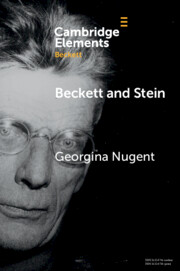Element contents
Beckett and Stein
Published online by Cambridge University Press: 01 May 2023
Summary
- Type
- Element
- Information
- Series: Elements in Beckett StudiesOnline ISBN: 9781108988377Publisher: Cambridge University PressPrint publication: 25 May 2023
References
- 6
- Cited by

